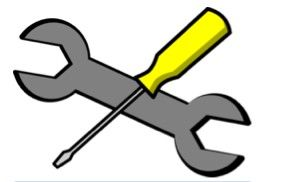
ECRI Institute Update: What happened to evidence-based maintenance?
ECRI Institute Update: What happened to evidence-based maintenance? Should CMS revise its preventive maintenance directive?
Tue Jul 03 2012
Yes! That seems to be the unanimous answer of the clinical engineering community to this question in light of a recent CMS directive. The directive states that in order to receive Medicare and Medicaid payments, hospitals must strictly adhere to manufacturer recommendations for inspecting and maintaining “all equipment critical to patient health and safety.” How will this directive impact your operation? How can it be challenged?
Although the term “critical equipment” was not defined in the Centers for Medicare and Medicaid Services (CMS) directive issued last December, examples included radiologic imaging equipment, life-support devices, key resuscitation devices, and “other devices whose failure may result in serious injury to or death of patients or staff”.
The directive, available at www.cms.gov/Surveycertificationgeninfo/downloads/SCLetter12_07.pdf, has drawn considerable comment and concern, particularly since it contradicts the more flexible stance promoted by the Joint Commission. For more than a decade, hospitals have been permitted to use their judgment and experience to determine the frequency of maintenance intervals and to otherwise deviate from manufacturers’ maintenance procedures. This flexibility has been widely supported in the literature and also by ECRI Institute.
The Joint Commission’s evidence based approach has improved the efficiency of clinical engineering inspection and preventive maintenance (IPM) activities. It has allowed more time for performing critical technology management activities and saved hospitals money without negatively affecting safety, quality, or technology performance. In contrast, many hospitals believe that adhering strictly to manufacturer recommendations would be onerous, costly, and would negatively impact quality of care by diverting maintenance staff away from more critical safety-related activities. It has been estimated that using the Joint Commission process saves the healthcare industry billions that would otherwise go to increased IPM time and more FTEs. Increasing the time spent on IPM procedures would also increase equipment downtime.
Since the directive was released, there has been much discussion within the clinical engineering (CE) community about how hospitals could comply, and ECRI Institute continues to be involved in the dialog. Specifically, we are concerned that compliance with the CMS directive will divert resources from other important activities, such as integrating medical devices with the electronic health record. Although we are sure that CMS intends to improve patient safety, we believe that the directive will have unintended consequences and add to healthcare costs without a commensurate benefit. “Because manufacturers establish maintenance recommendations before equipment goes into production and without the benefit of field experience, their recommendations tend to err on the conservative side, says Tim Ritter, CBET, CCE, senior project engineer, Health Devices, ECRI Institute.
In a recent well-attended ECRI Institute web conference, participants engaged in an active discussion about the parts of the directive that present the most concern. The webinar presentations reviewed how hospitals have been performing IPM prior to the directive and explored the impact of complying with it. Participants were anonymously surveyed during the webinar on how the CMS directive is expected to affect their operations. Their replies indicated that...
Read this entire article in TechNation's July 2012 issue by clicking here.
